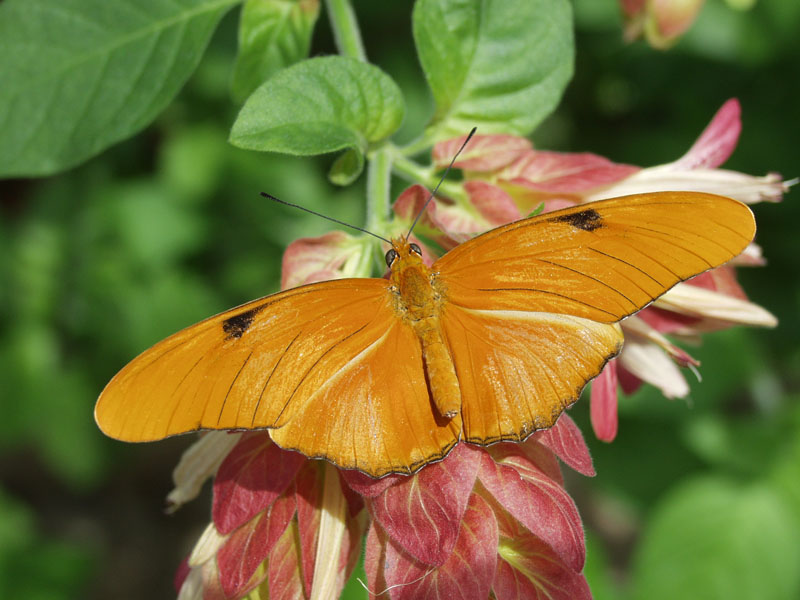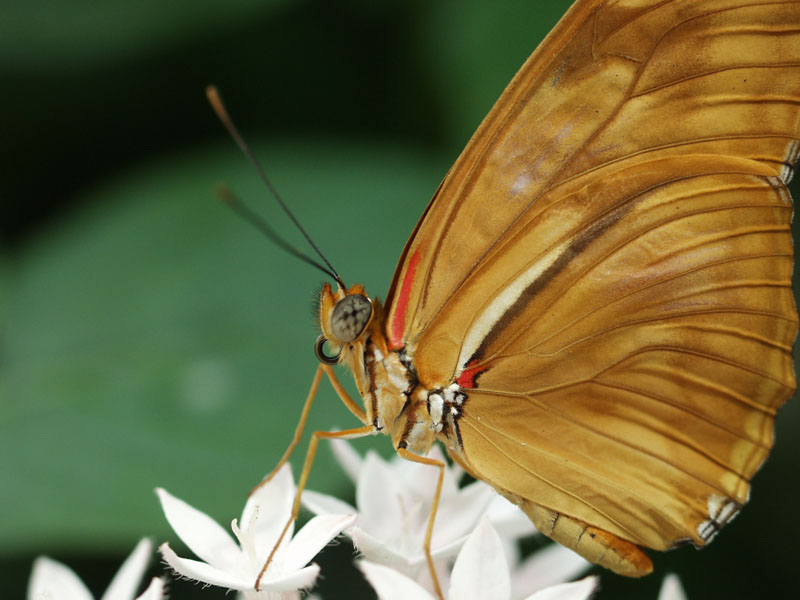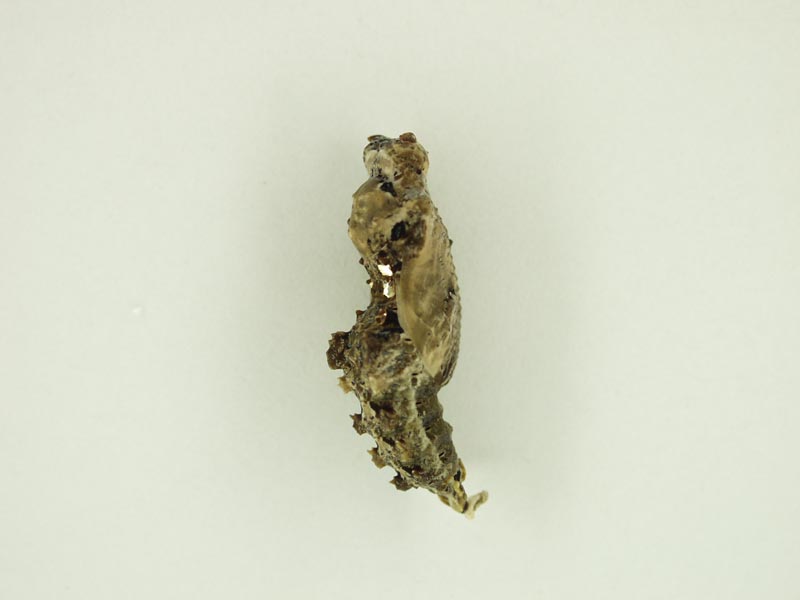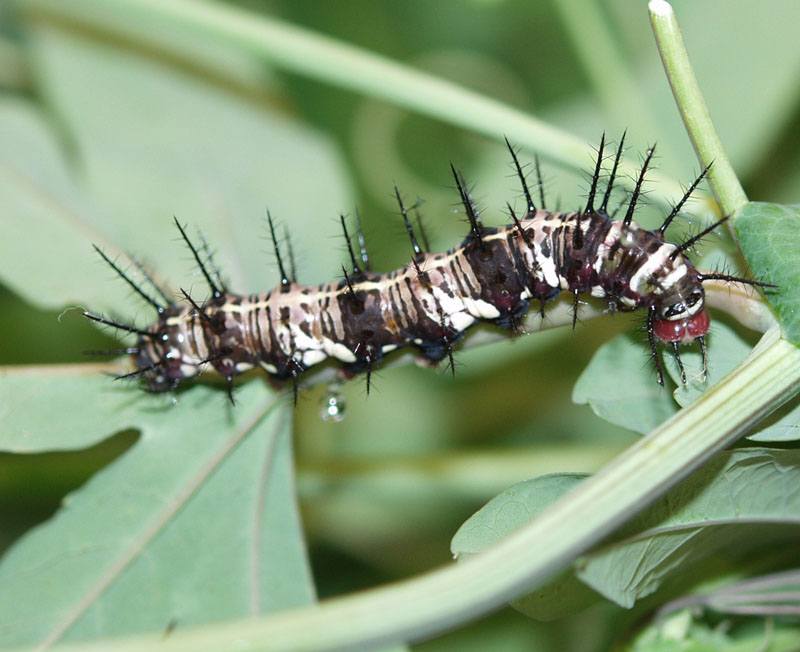



Adults can be found feeding on a variety of flowers.
In both Latin and Greek the genus Dryas means wood or tree nymph. The origin of the specie iulia is currently unknown.
Julia Longwing can be found in and around subtropical hammocks as well as nearby fields. They are also found in urban areas visiting gardens.
Males spend a good part of their days patrolling the habitat looking for females. After mating the females lay their eggs singly on the newest growth. When the caterpillars hatch from their eggs they feed on the host plant until they form their chrysalis.
In the warmest parts of their range adults can be found year round but during the summer months they tend to stray north into locations which may not be suited for them during the winter months.
Julia Longwing are believed to participate in a behavior known as "trap-lining" which is where a butterfly hunts for its nectar sources on a set route everyday.